HTC U12+ review – in pictures
The HTC U12+ gets a lot of things right, but a so-so battery life holds it back from greatness
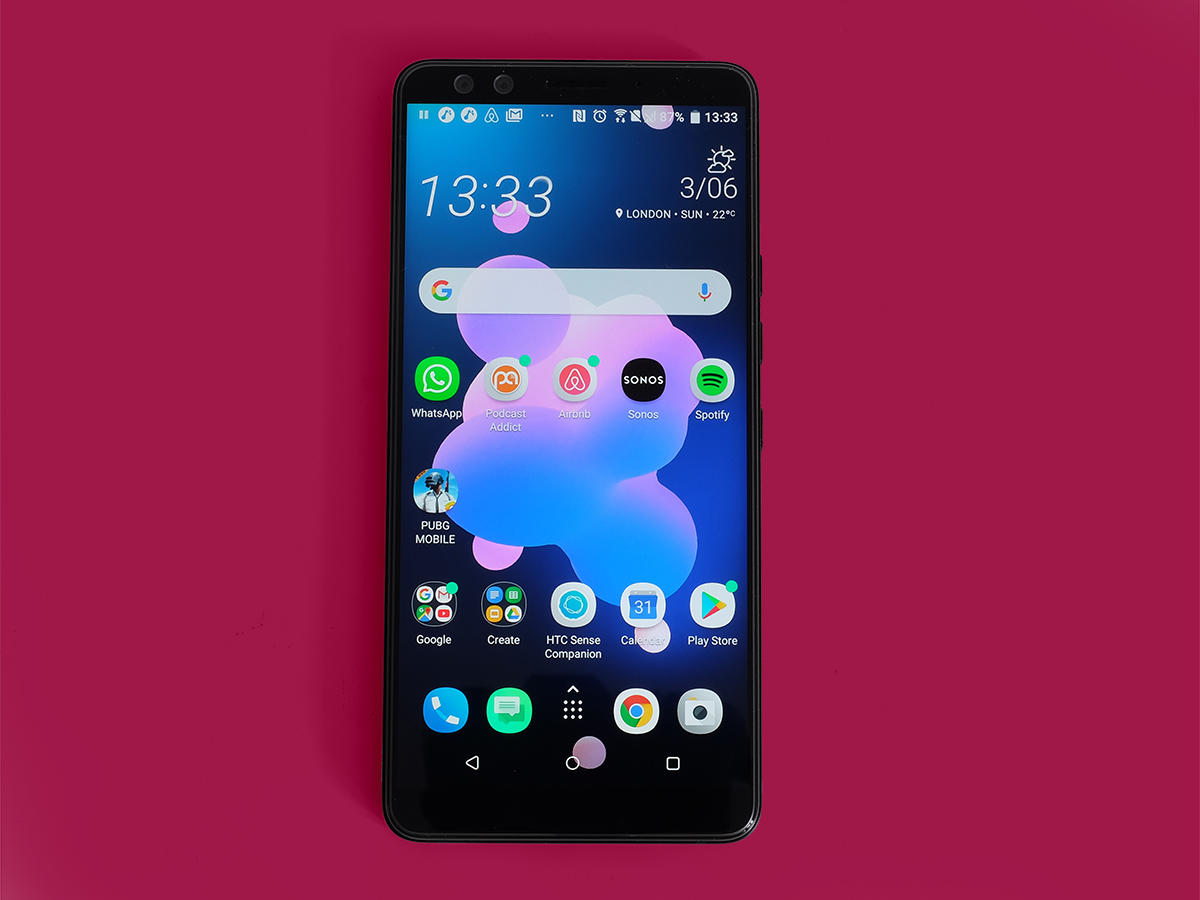
OLD FRIENDS
Why would you buy an HTC? Back in 2014 this question had an obvious answer. HTC made awesome phones. Since then, well, let’s just say the last four years haven’t been all that kind. Like a YouTuber who never seems to get a viral break, HTC hasn’t come up a smash hit to compete with Apple and Samsung since the HTC One M8. The HTC U12+ has a crack at luring us back in with some unusual features like haptic buttons and HTC-favourite squeezy sides. These are unlikely to turn HTC’s luck around, not with the lower-price OnePlus 6 out to court Apple and Samsung haters. However if you’re a notch-hater, this phone doesn’t have one. And aside from disappointing battery life the HTC U12+ is well worthy of consideration.
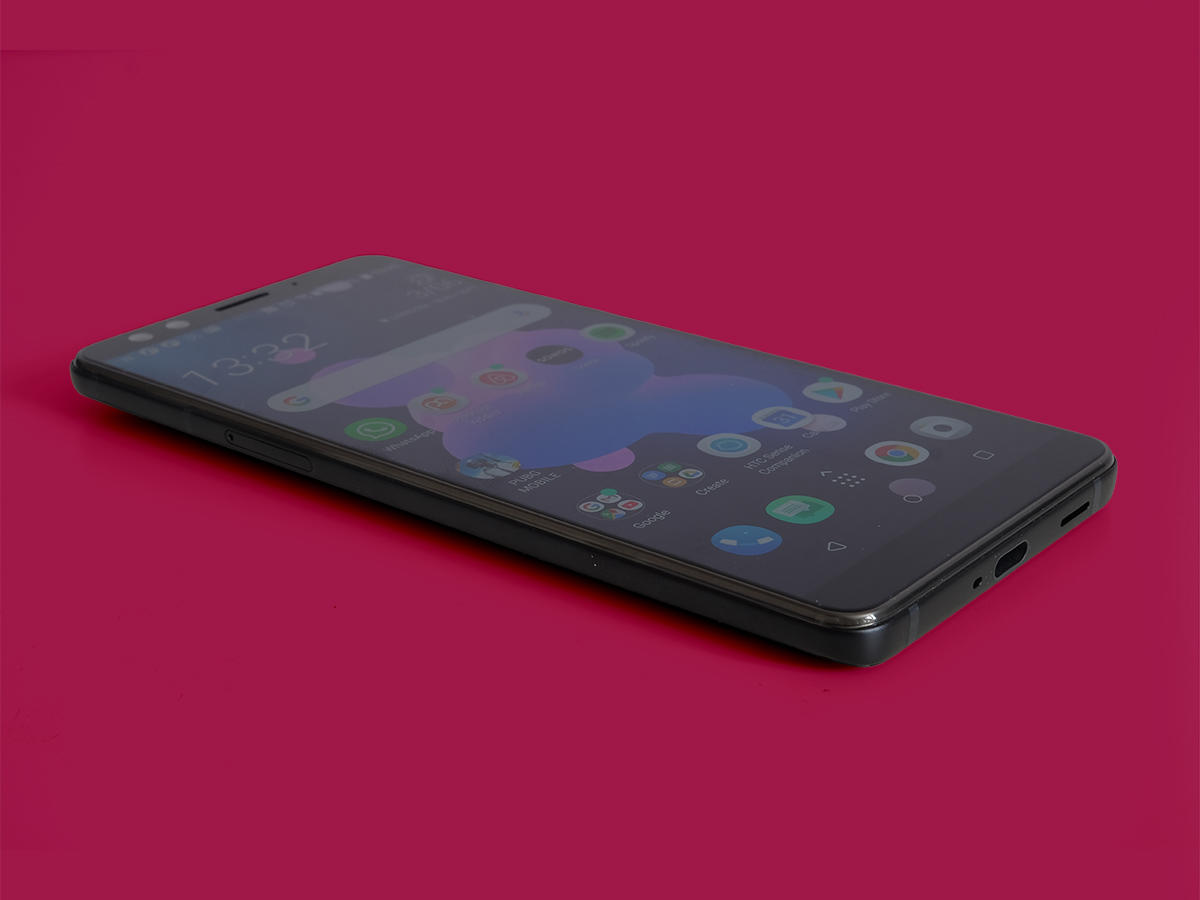
NOTCHLESS WONDER
A quick look at the HTC U12+’s back makes it seem similar to the other high-end phones you can buy today. Its rear is glass, and so shiny you can use it to check your hair on the way to work. There are a couple of important stand-outs to note, though. The HTC U12+ does not have a notch. LG, Huawei, OnePlus and Honor have all been sucked in by this design trend, but here HTC has stuck with a normal rectangular screen. It’s the longer 18:9 kind though, so it doesn’t look dated. Still, the display doesn’t push to the edges as much as a Galaxy S9+ or OnePlus 6, so you get slightly less screen inches per inch of phone than some. The HTC U12+ also feels fairly large, and at 8.7mm thick isn’t super-thin.
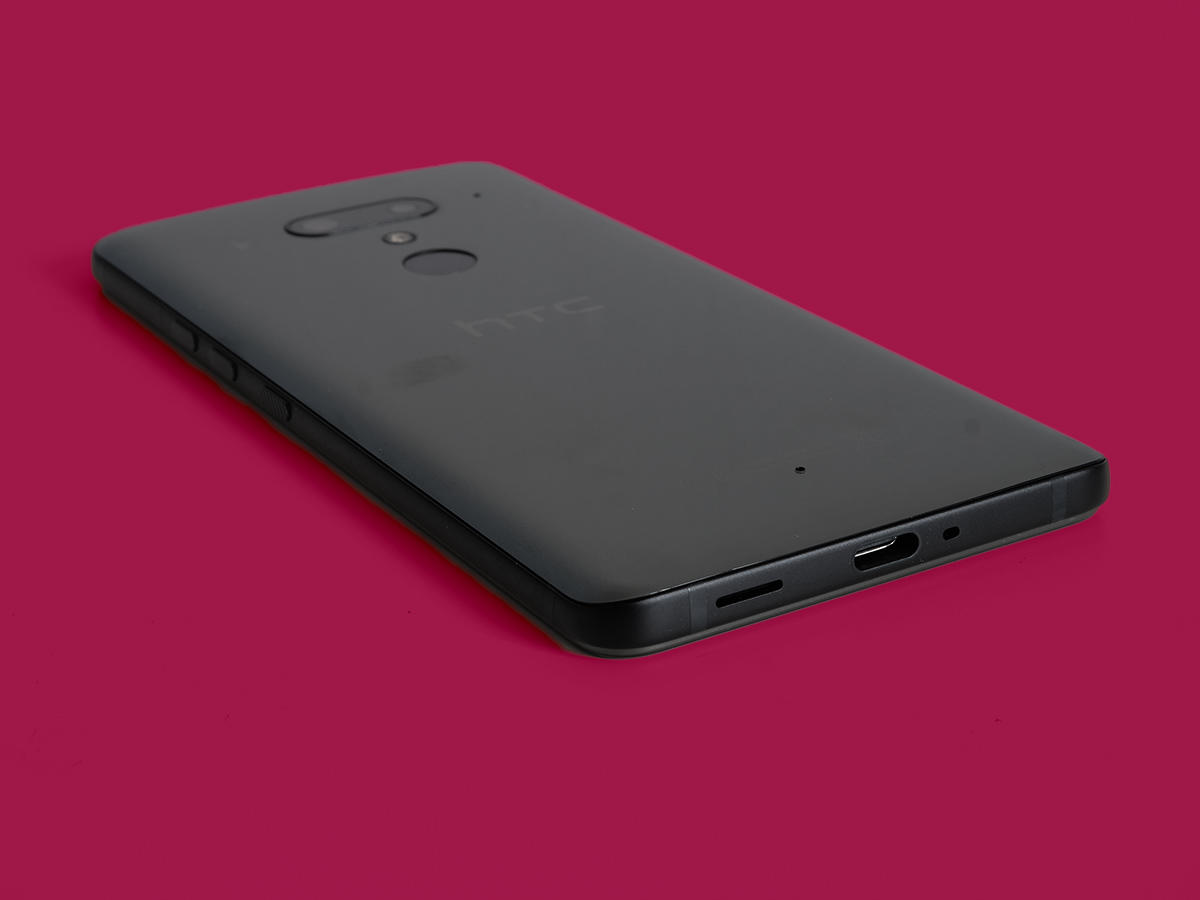
CHUNKY BUT FUNKY
A rectangular brick of phone this thick would usually feel flat-out chunky, but the curved “liquid” glass on the back avoids this. The HTC U12+ is big then, but still feels good. You can also get the HTC U12+ with an unusual translucent finish that reveals the gubbins hidden under the surface. As you can see, HTC sent us the standard silvery metallic version. Phone-makers currently experiment with all kinds of glassy finishes, and you might like this one if you think the Honor 10 looks like someone wrapped it in metallic wrapping paper.

UNDER PRESSURE
Pressure-sensitive sides are what really set the HTC U12+ apart from the rest. The HTC U11 had these too. You can squeeze the phone to start the camera, wake the Google Assistant or launch an app. HTC calls it Edge Sense. One obvious issue is that unless you set it to require quite a firm squeeze you’re likely to set it off accidentally. Even normal hand pressure can start off the Edge Sense animations unless you calibrate it properly. HTC has taken the Edge Sense tech a step further here too. Look at the HTC U12+’s buttons. Seem normal, don’t they? Look a little closer and you’ll soon realise that they aren’t though. Rather pressing down, they simply sense the pressure of your finger and then set off a haptic pop to simulate the feel of pressing a clicky button. A bit like Apple’s home button.
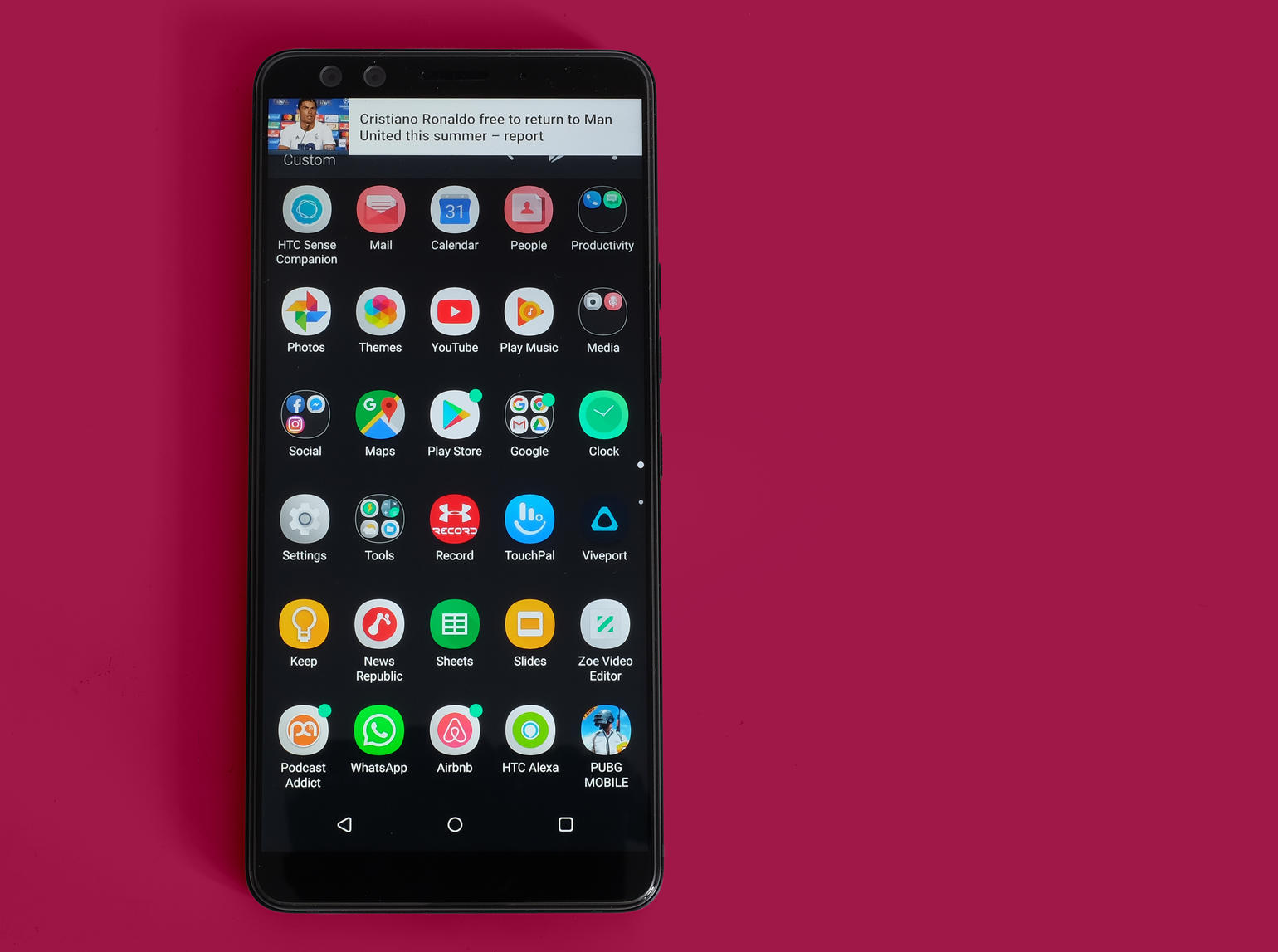
SCREEN MACHINE
The HTC U12+ screen compares pretty well with the top contenders, despite using an LCD screen rather than an OLED. It’s a 6-inch 18:9, 2880 x 1440 pixel display with higher pixel density than the OnePlus 6. Screen snobs will find its colours oversaturated at the default settings, and the colour temperature a little cool. However, you can change this. Head to settings and you’ll find a purist’s sRGB mode and temperature sliders. Switching to sRGB makes the HTC U12+ look more grown-up. And like switching from drinking Coke to green tea, you can smugly tell people about it. If you’re that kind of person.
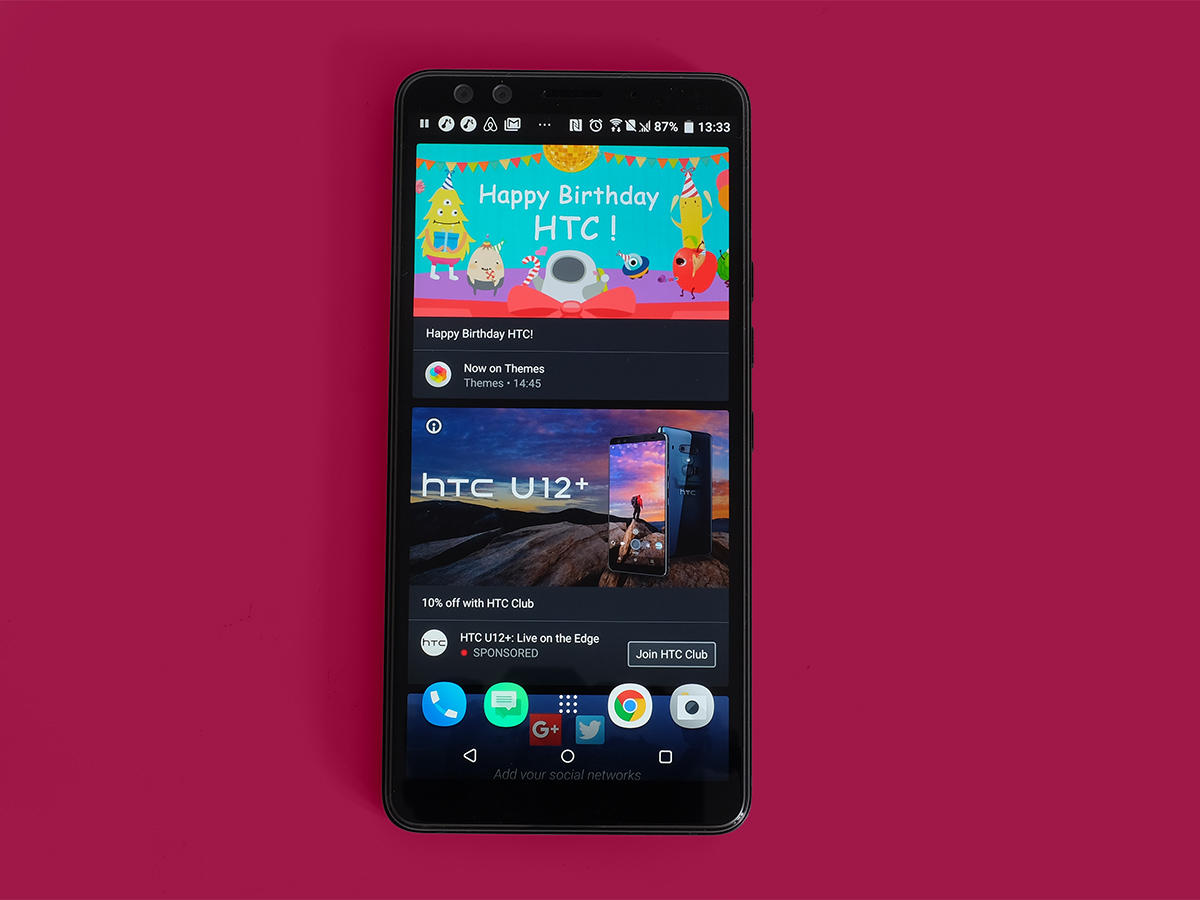
TOP PERFORMER
The HTC U12+ runs Android 8.0.0 and, like all HTCs, the Sense interface. Its basics are similar to those of normal Android. You can jump over to the apps menu with an upwards swipe and it’s mostly clean-looking. HTC is still keen for us to use HTC Sense homescreen, though. This is a feed of news and social updates that sits to the left of your standard homescreen. The HTC U12+’s general performance is also excellent, because it has one of the fastest mobile processors in the world right now. It’s the Snapdragon 845, an octa-core CPU that earns the phone a Galaxy S9-matching 8825 points in Geekbench 4. Android feels smooth, games like PUBG run at top graphics settings and during testing, the phone hasn’t crashed or stuttered once.
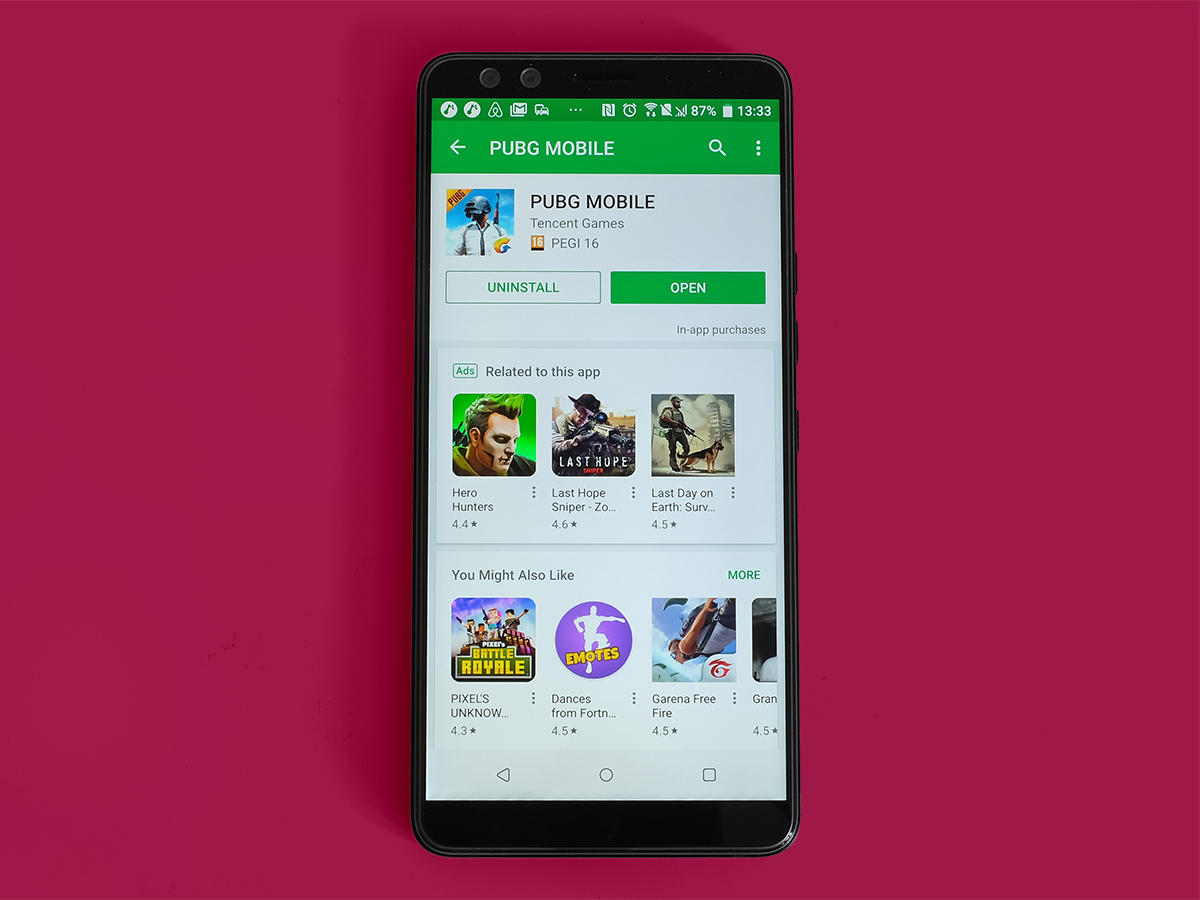
CAMERA CONCERNS
It’s over with the camera that I find the only performance issue worth complaining about. The HTC U12+ suffers from a little shutter lag. You want to feel a phone takes a photo as soon as you hit the shutter button, but there’s a half-second lag here. There’s otherwise a lot to like about the U12+’s camera, though. On the back you get a 12-megapixel main sensor with optical image stabilisation and an f/1.8 lens, plus a 2x zoom 16-megapixel sensor with a slower f/2.6 lens. Taking the HTC U12+ to shoot out in the park was a reminder of how useful a zoom can be, letting you compose shots that just aren’t possible with the standard 27mm-ish view.

MANUAL MASTERPIECE
The HTC U12+ also has superbly effective HDR processing. This is where a phone uses multiple blended exposures to bring out more detail in scenes where there’s a big difference between the darkest and brightest areas. It does aim for impact, though, occasionally blowing-out highlights to make sure shadow areas look clear and bright. However, switch to the Manual mode and you can capture raw DNG files and get the best of both with an application like Photoshop. Some of the results we’ve squeeze out of the HTC U12+ are seriously impressive. Night photos are good too, although they don’t quite match either the OnePlus 6 or Galaxy S9.
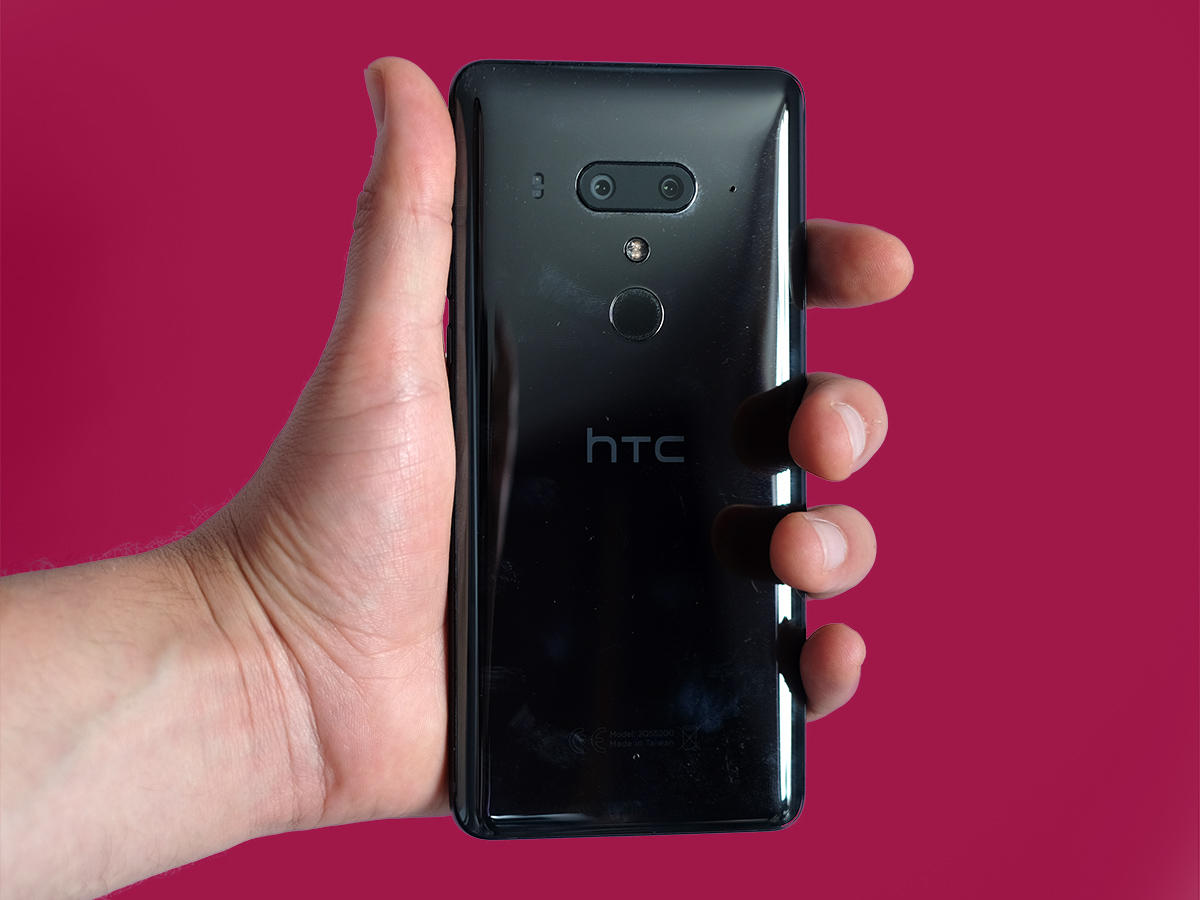
BATTERY BLUNDER
Aside from the HTC U12+’s weird non-moving buttons and the just-OK screen brightness, all complaints so far have been issues most can handle. However, its battery may test your patience. The HTC U12+ has a 3500mAh battery. That sounds decent, with 200mAh more than the OnePlus 6. However, in reality stamina is only just passable. Draining the HTC U12+ in a day is a cinch. Just a few hours of podcast streaming and some photo capture sees the battery drain almost to nothing before bed time. It’s a head-scratcher. The HTC U12+ doesn’t have an ultra-bright 1000-nit screen and all its innards are up-to-date, but it seems to fall a way short of the best. This is a phone you’ll need to charge every day.
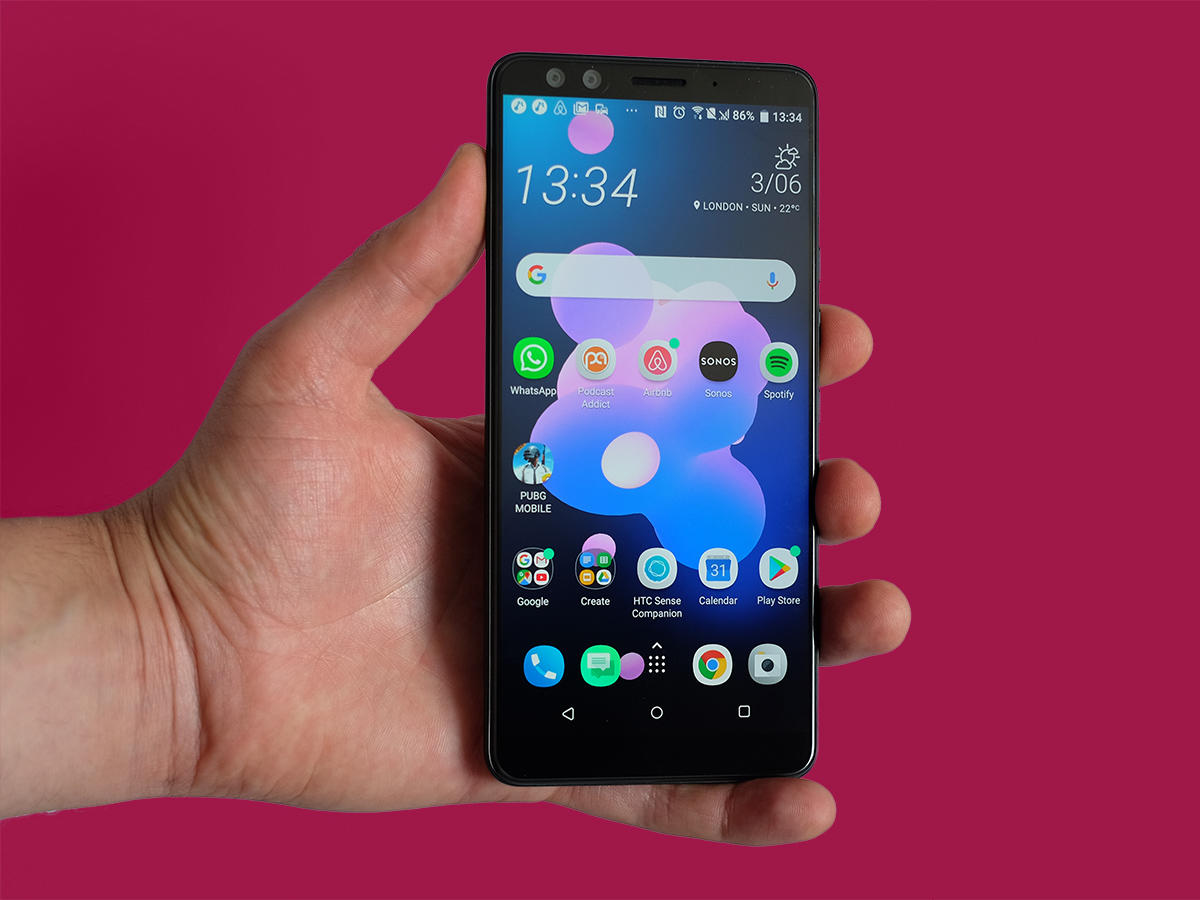
WHAT’S THE VERDICT?
The HTC U12+ was a chance for HTC to tell us what its vision of Android is. What did we get? Pressure sensing quirks that don’t necessarily seem much better than what we had before. Add just passable battery life and the HTC U12+ doesn’t get close to rivalling the Galaxy S9 or, more importantly, the cheaper OnePlus 6. However if you like HTC’s style, a great camera, loads of power and high-quality build still make it a solid choice. And while it may not be as great value as a OnePlus 6, it’s still a lot cheaper than a Huawei P20 Pro or iPhone X.


